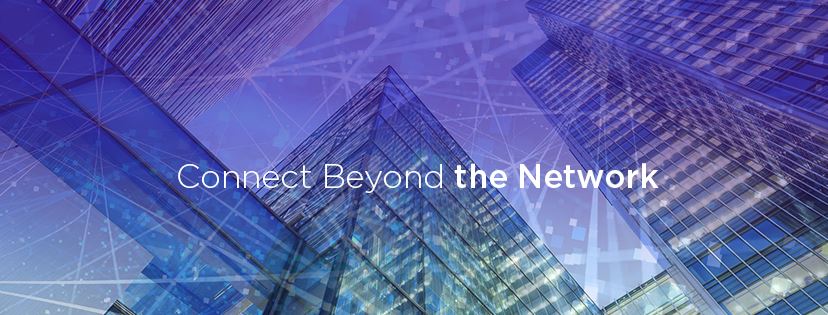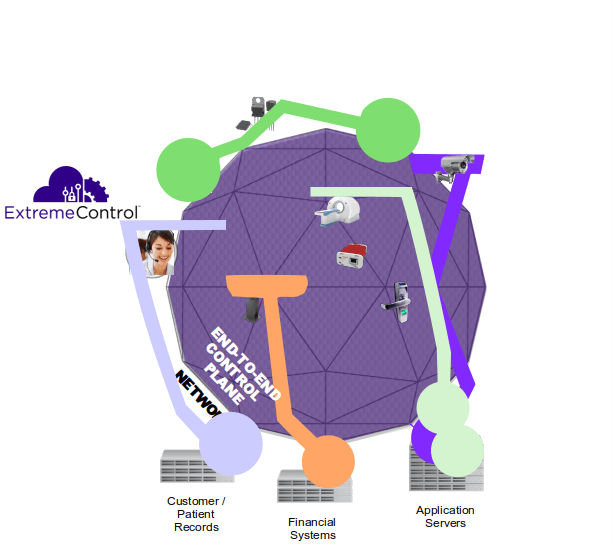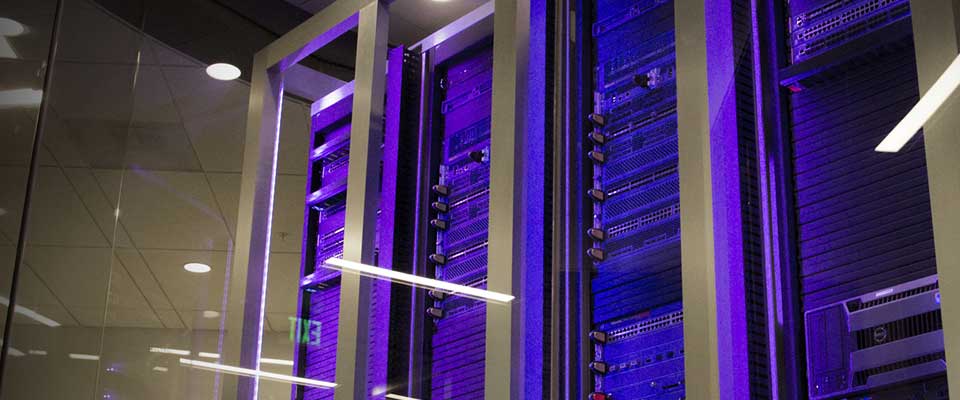
Extreme Network’s Bob Nilsson talks about why comprehensive network solutions are the way of the future for HIT, and why health organizations should invest in them now.
In case you missed it, the world has gone mobile. Look up from your screen and look around; chances are, those around you are looking at screens, too. Innovation and consumer demand have led many an industry to its virtual tipping point. Now, healthcare is on the heels of its own tech-fueled transformation.
What started with electronic medical records (EMRs) has exploded into a myriad of data streams and devices all with the promise to improve healthcare down to the studs—software design, better administrative functions, clinical wearables and telemedicine technology—made specifically to enhance patient care and population health management (PHM). The Internet of Medical Things (IoMT) is real and rapidly developing, and it will require health organizations to look closely at better network solutions.
“As mobility grows, almost all medical devices are going wireless. Many medical facilities expect to connect almost all devices via wireless means in the next three to five years,” said Nilsson, director of vertical marketing solutions at Extreme Networks, a network solutions provider based in San Jose, CA, that serves a number of markets, including healthcare, education, the U.S government and hospitality.
Nilsson understands the challenges of network operations, having worked in the IT field for more than 30 years. Invariably, he also understands the growing necessity for healthcare organizations to invest in more agile and formidable forms of network solutions. “Doctors must have instant access to EMRs in designated locations throughout the hospital. Patients and visitors demand high-performance streaming entertainment within their hospital rooms and in guest areas. All of it requires pervasive, high density, reliable and resilient wireless coverage,” he said.
Healthcare Hacks on the Rise
Of course, all this need for connectivity comes at a cost. Nearly every gadget in healthcare now relies on a virtual connection. Along with the demand for increased bandwidth comes a mixed bag of private, yet pertinent medical data to protect. As a result, the challenges have started to pile up for healthcare organizations, including data and device integration, interoperability, data governance, HIPAA compliance, privacy and security. The stakes for healthcare seem infinitely higher, too. There’s more to lose than money when a hospital’s network isn’t working correctly: a healthcare organization’s network can ultimately affect people’s lives.
Some organizations have tried to amend antiquated technical infrastructures with a few new tools and security patches and plugins. However, those upgrades could also lead to downgrades in efficiency and increased vulnerability. “It takes only one unsecured device or network access point for an organization to have its data, including the protected health information (PHI) of patients, compromised. That makes it critical to have end-to-end security enforced by network policy. The network must be aware of every device or person who attempts to connect to the network from any location,” said Nilsson.
In an era where ransom attacks are slated to infect data sets by the millions in exchange for the cryptocurrency of Bitcoin in the billions, the time to establish a secure network solution is now. According to the Ransomware Damage Report published by Cybersecurity Ventures, global ransomware damage was estimated to exceed $5 billion by the end of 2017, and ransomware attacks on health organizations are expected to quadruple by 2020.
There is no shortage of HIT innovations, nor is the trend of bringing your own device (BYOD) policies disappearing anytime soon. The one thing that can bring all this data and device technology together is an end-to-end network, according to Nilsson, and the reason for doing it? Nilsson shared five worth contemplating:
5 Reasons End-to-End Network Solutions are Vital to the Healthcare Data Revolution
1. Greater Data Security and Governance
An increased digital footprint can often lead to a lot of network vulnerability, especially when BYOD policies introduce more devices into the mix. Having an end-to-end network solution helps eliminate a lot of those issues. With an end-to-end network, you can centrally manage and define granular policies to meet with compliance obligations as well as authenticate and apply targeted strategies to users and devices.

Network segmentation allows an organization with thousands of devices to improve efficiency and security at the same time. For example, Concord Hospital uses Extreme Network’s Fabric Connect to support and secure as many as 3,000 devices at a time. “It empowers you to roll out network-wide policies with scalable enterprise-grade security for BYOD. You determine which users with what devices can connect to the network at particular times and from designated locations,” said Nilsson.
Furthermore, a good network solution will come with assessment tools to help establish and retain compliance even as the network grows.
2. Supported Mobility and Digitalization
As IoMT continues to develop, supporting the need for digital mobility and digitalization becomes even more critical. Naturally, supporting clinical use cases and various devices is essential. However, health organizations need to also think about patients as a consumer and what that means regarding building out a network.
“Consumer expectations are indeed driving expectations of patients, as well as their guests and visitors. Patients often have a choice of hospital facilities, so the hospitals must provide the best possible patient experience. The healthcare industry is learning a lot from the hospitality industry. It is critically important to provide the very best Wi-Fi environment, streaming entertainment and guest engagement apps to meet patient and guest demands and guide them within the hospital.”
3. Enhanced User Experience
Having a more seamless interface will become even more vital as new forms of data streams and devices find their way into more clinical and administrative workflows. A significant criticism of earlier care tools, like EHRsS for example, was the decentralization of data as well as having to deal with multiple user interfaces (each with its own set of limitations) to carry out several functions over the course of delivering care. This type of approach not only leads to poor data quality and more room for human error, but also increases confusion and frustration on behalf of the user.
A similar argument can be made when operating your organization’s growing network. To make quick decisions and troubleshoot issues effectively requires an inclusive view of your network’s functionality. A comprehensive network solution can offer a singular view of both your wired and wireless network from the edge to the private cloud. Just like an excellent care management tool, a good network management tool should have a strong, singular user interface complete with insights that supports decision making.
“Providing the best possible user experience, while ensuring security, is the goal of any good network. An end-to-end solution that can be managed from a single pane of glass is the best tool for this along with application and network analytics,” said Nilsson.
4. Deeper Analytic Insights
Of course, operating from a single pane of glass isn’t useful if the network tools don’t offer any actionable insights. Similar to how a powerful PHM tool can provide pertinent information on how to best manage your patient population, an intuitive network analytics tool can help you better manage your virtual community of devices.
An excellent network analytics tool will give you a good view of what applications are running on your network, who is using them and what the response time is for each application. This provides a granular look into all the components of your system, including application performance, users, locations and devices. Having this kind of view allows you to make data-driven decisions and troubleshoot issues quickly. Additionally, a good network solution will also gauge user-behavior and engagement of an application.
5. Increased Network Flexibility and Reliability

Simplified infrastructure management (which leads to better security, reliability, resiliency, user experience and support) is perhaps the most significant benefit of an end-to-end network solution. This ultimately leads to improved patient outcomes and provides the opportunity for better efficiency and lowers the cost of healthcare for providers.
This kind of ease of infrastructure management comes from a network solution that is both agile and robust, having the ability to make proper changes quickly as well as having the support and stamina to always be available. “A hospital’s network must run 24/7. It’s a requirement that can be tricky to fulfill when you have a myriad of digital touch points interfering with data flow and increasing security soft spots,” said Nilsson.
That’s why a network that lets you make virtual changes is incredibly critical nowadays, especially as health organizations move to implement new technologies. Concord Hospital is also using the network solution to aid in the replacement of its EMR system. “We ditched the PCs and are putting thin clients everywhere. With no more Windows PCs, the network becomes even more critical now,” said Mark Starry, CTO of Concord Hospital.
Still, you don’t have to take Starry’s word for it, or even Nilsson’s for that matter when it comes to the future of network solutions. All you have to do is take another look around. The innovators and the consumers are coming with their network demands—and while it’s important to consider the cost of what it will take to meet them—perhaps, it’s better to consider what it will ultimately cost health organizations if they don’t.

